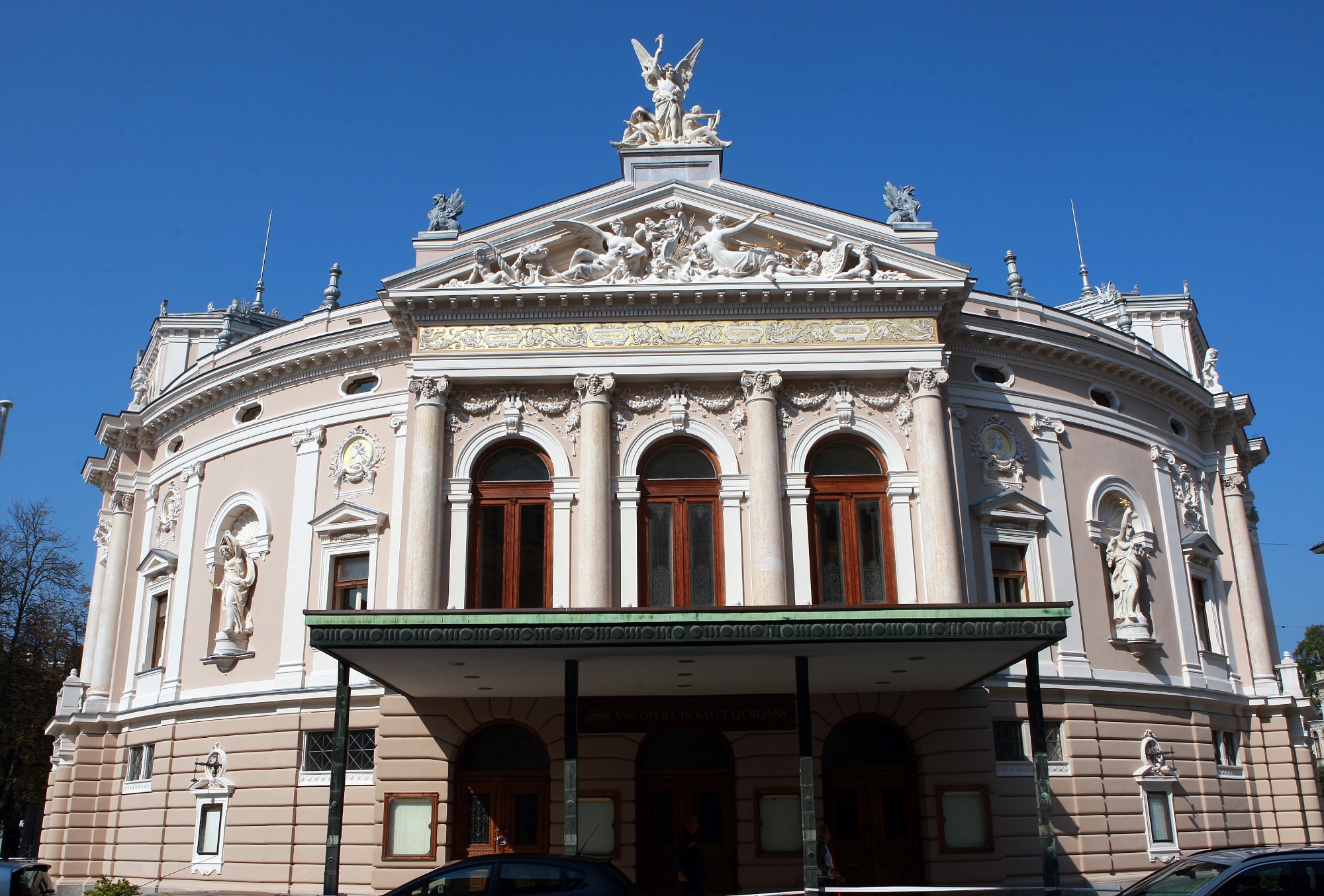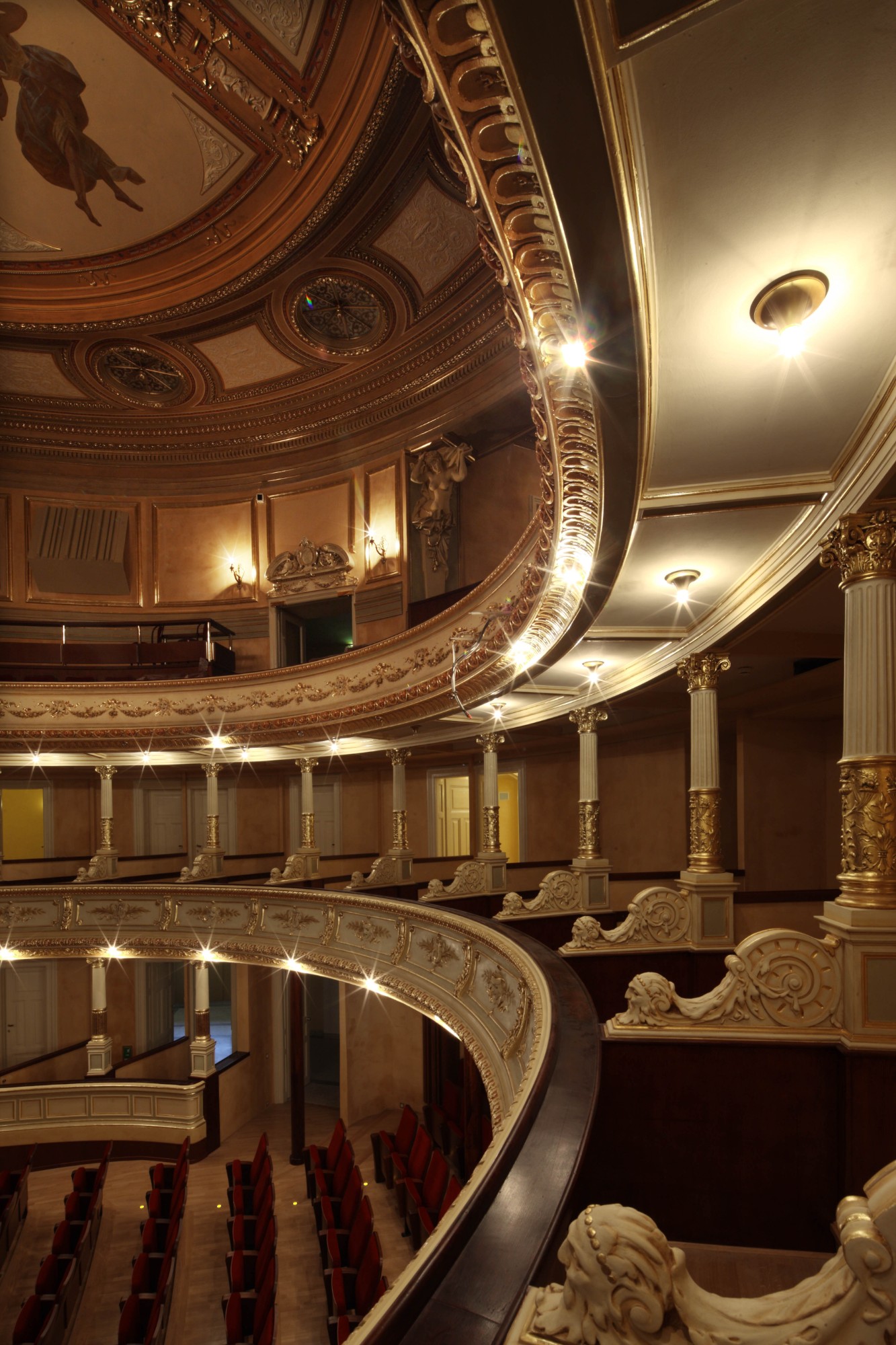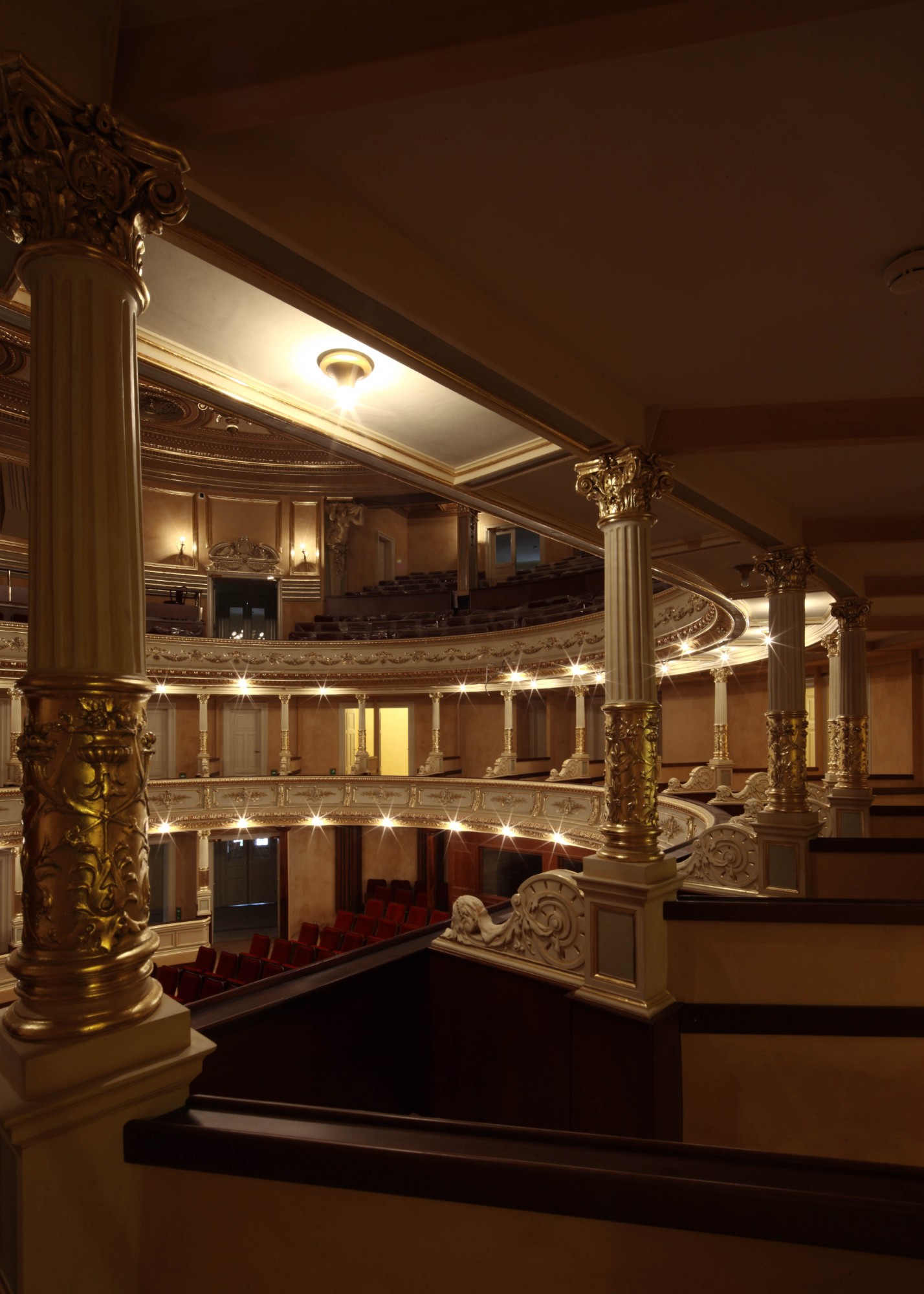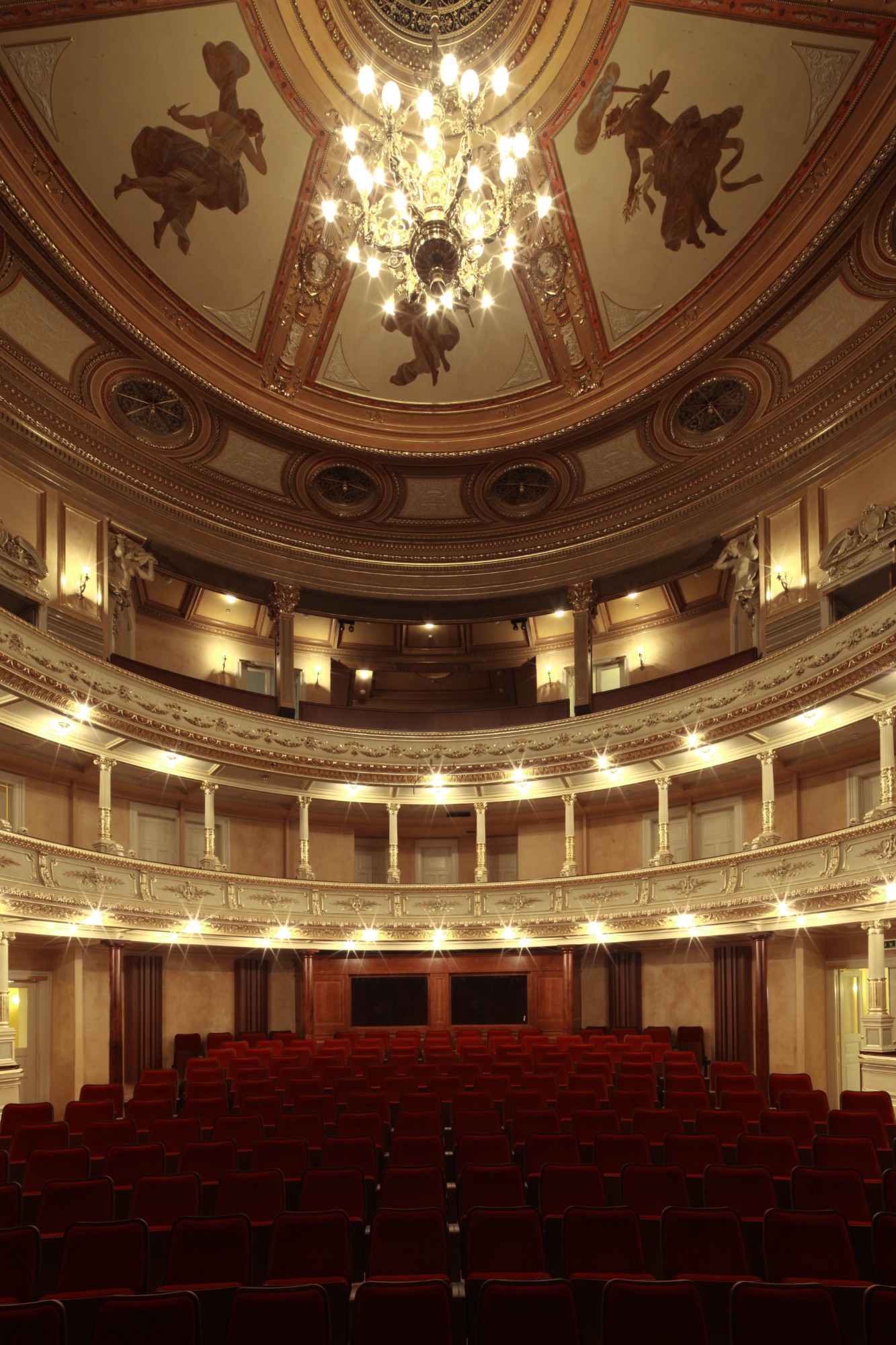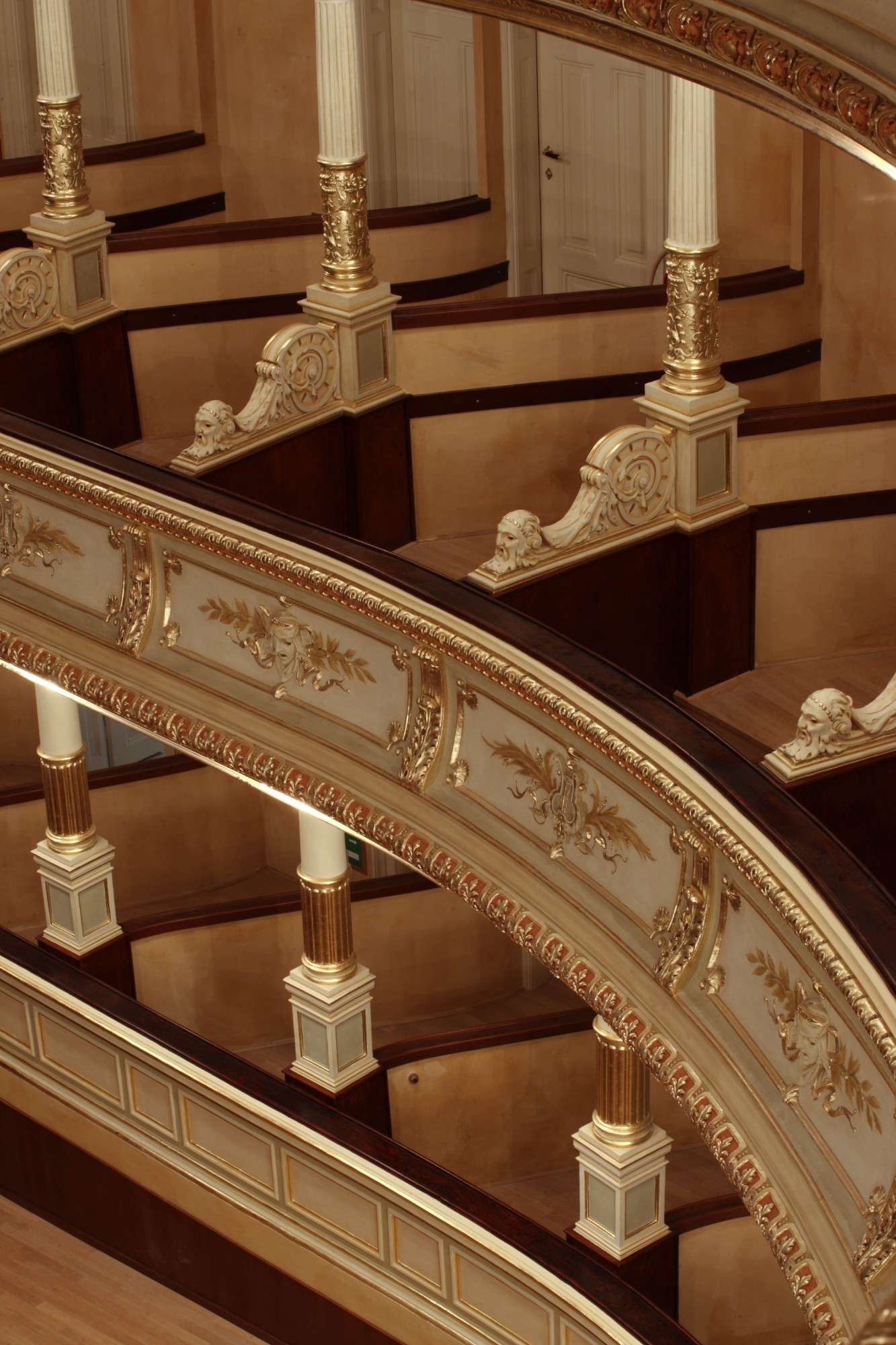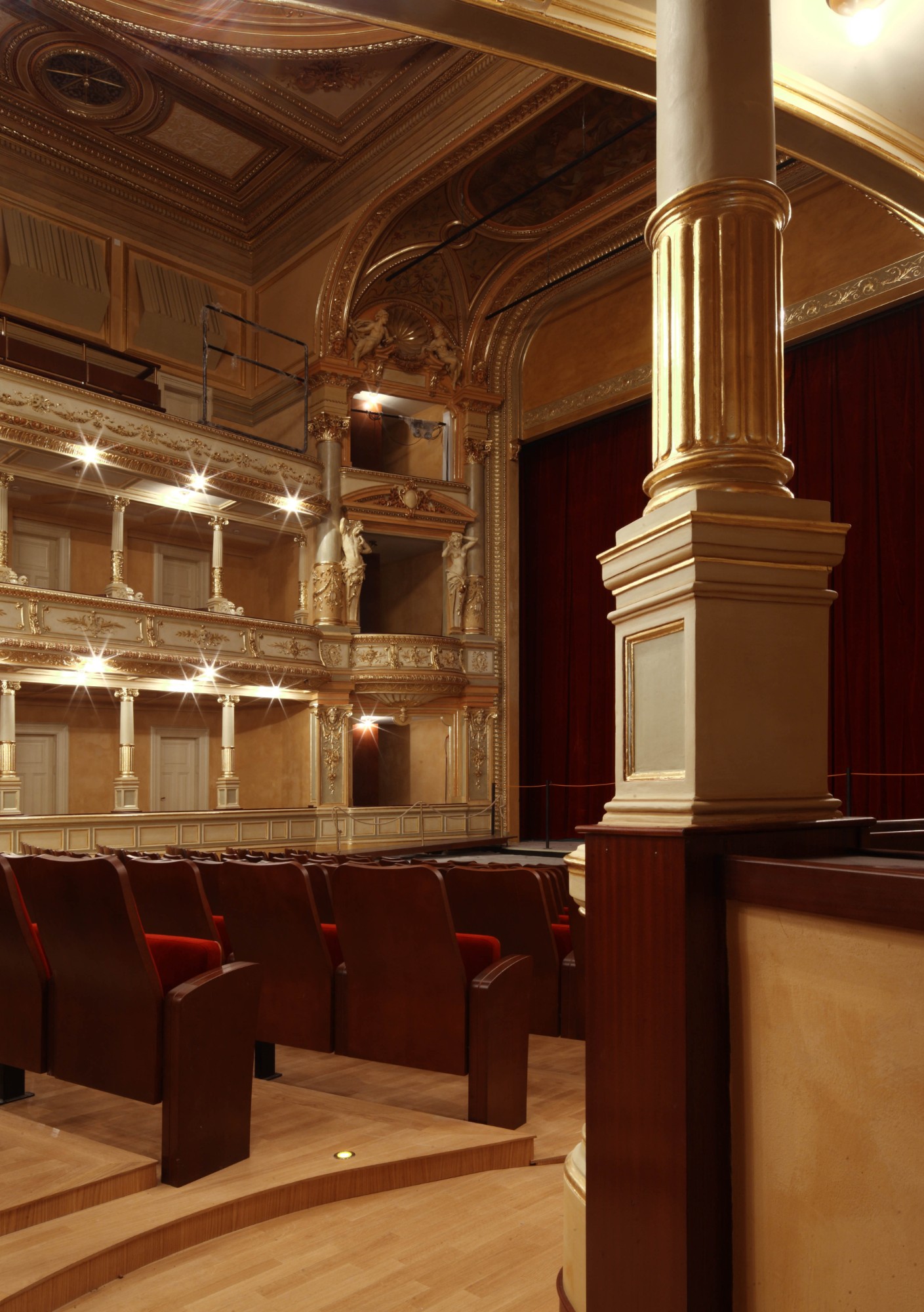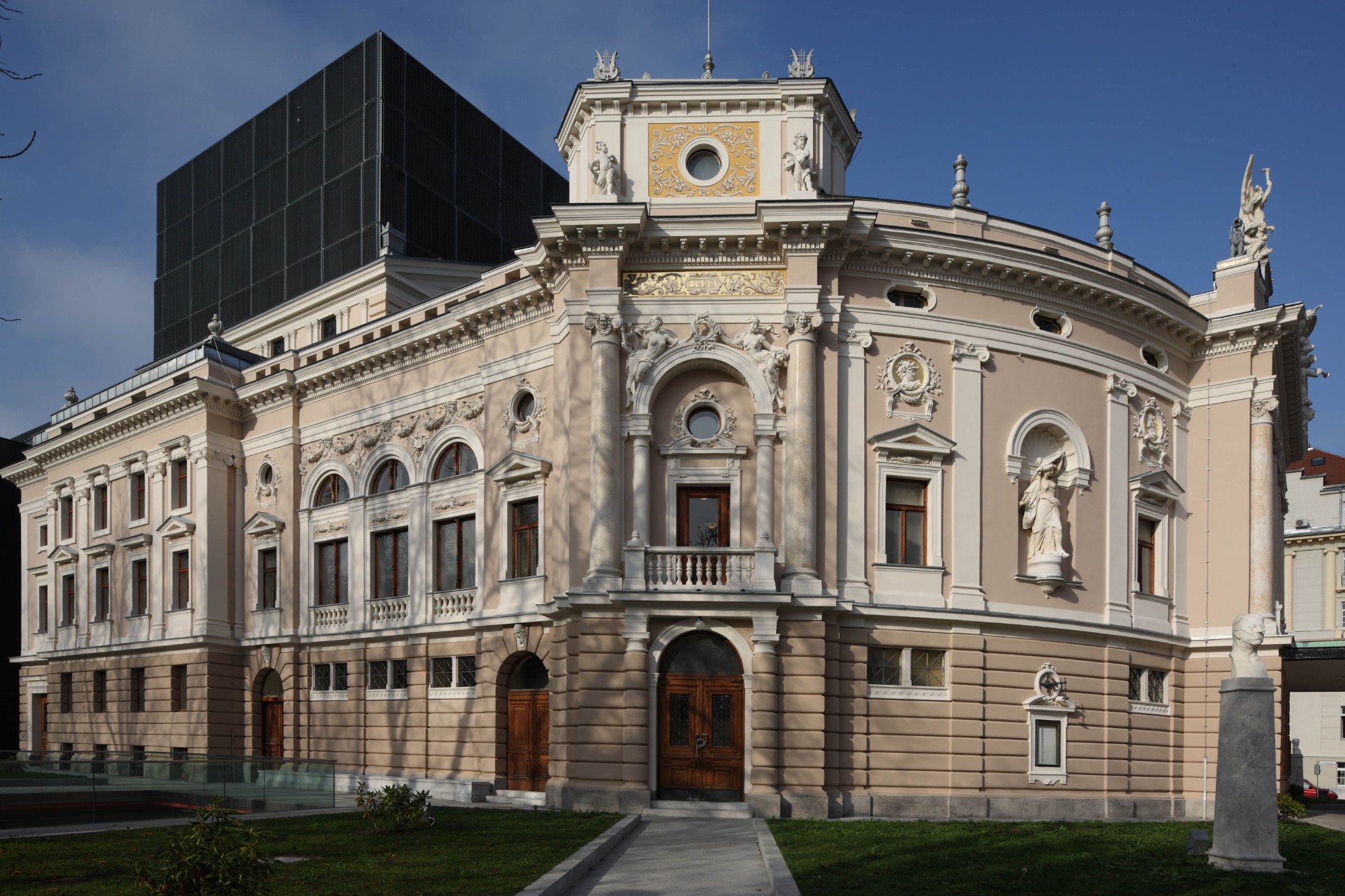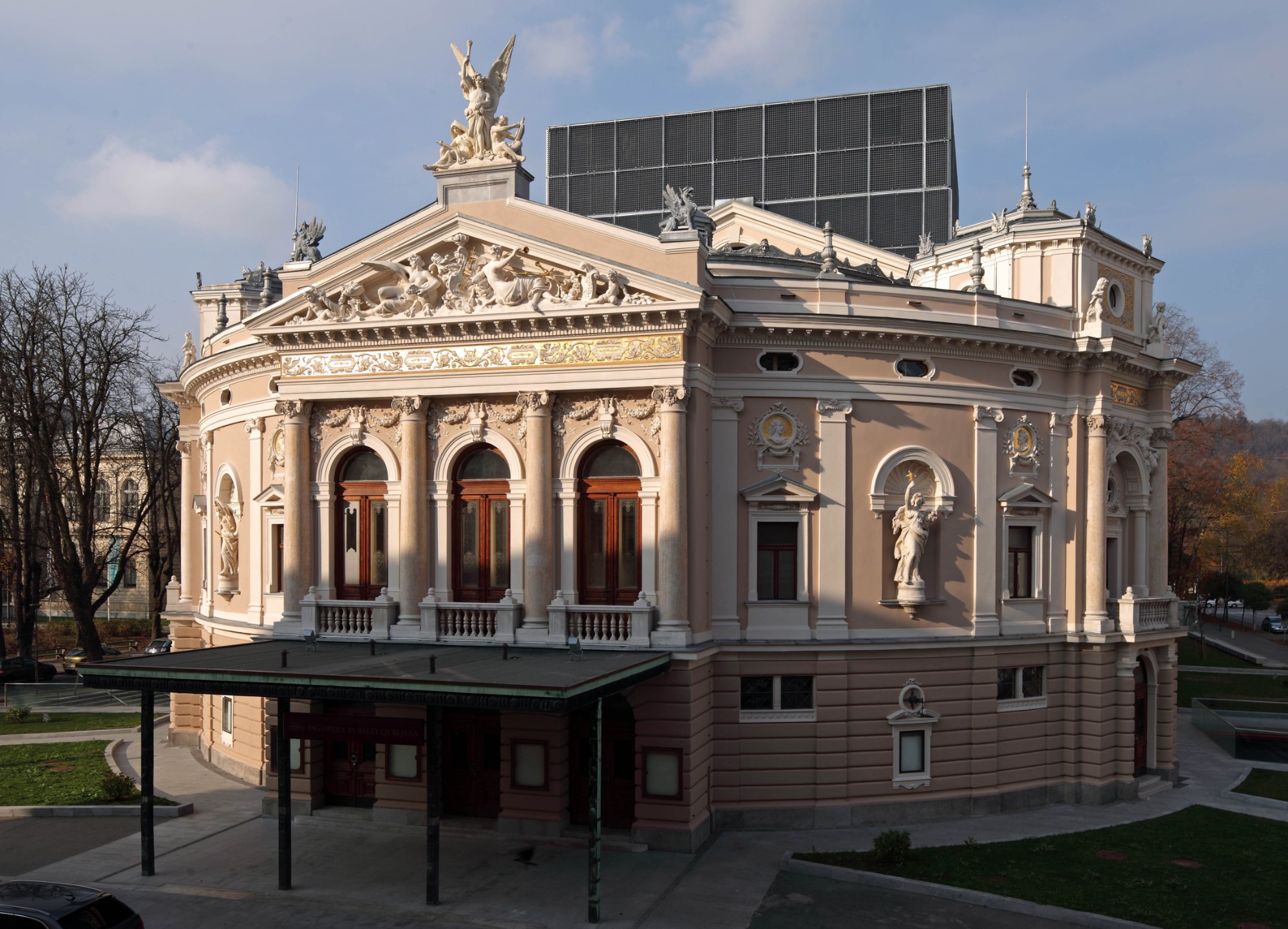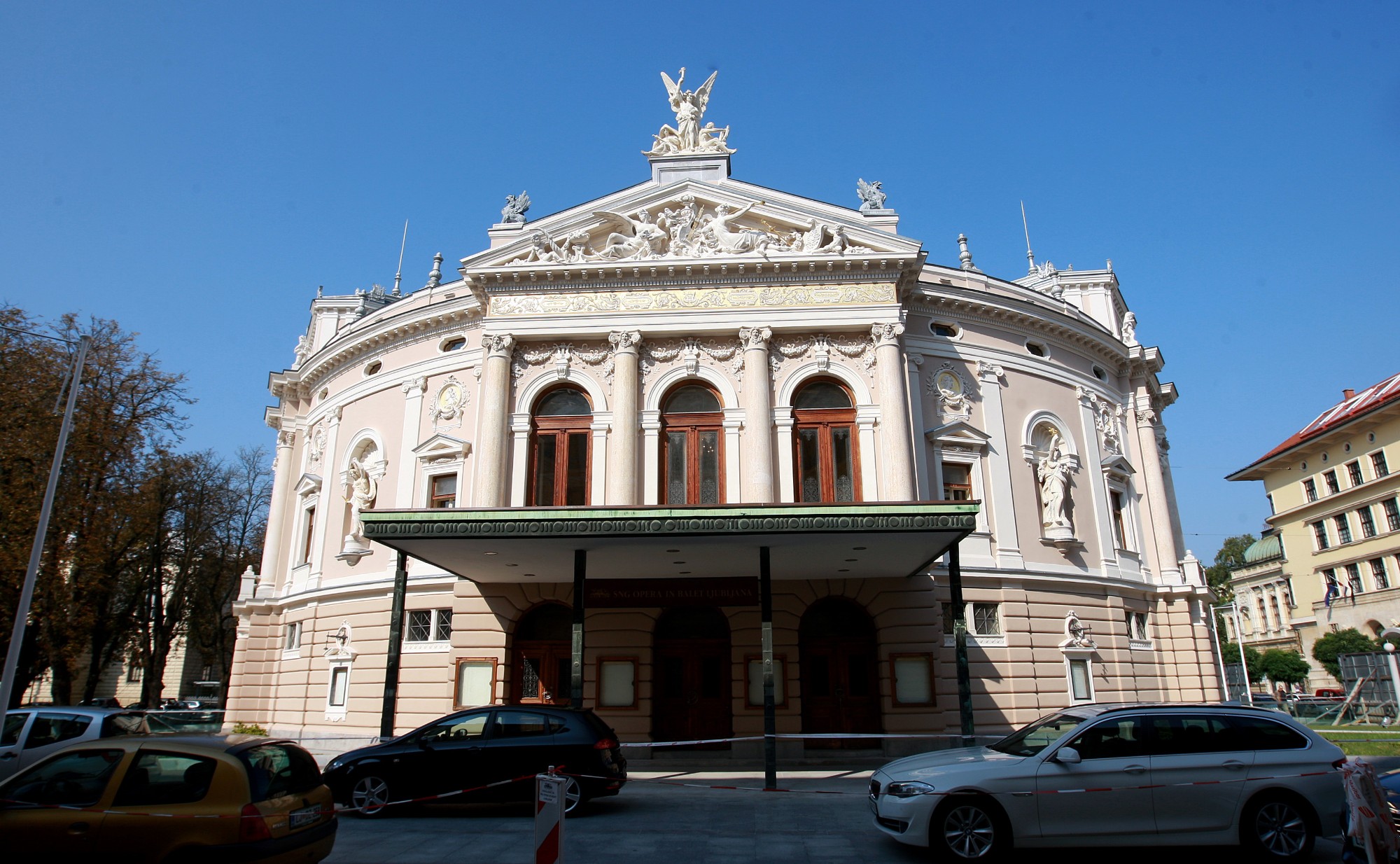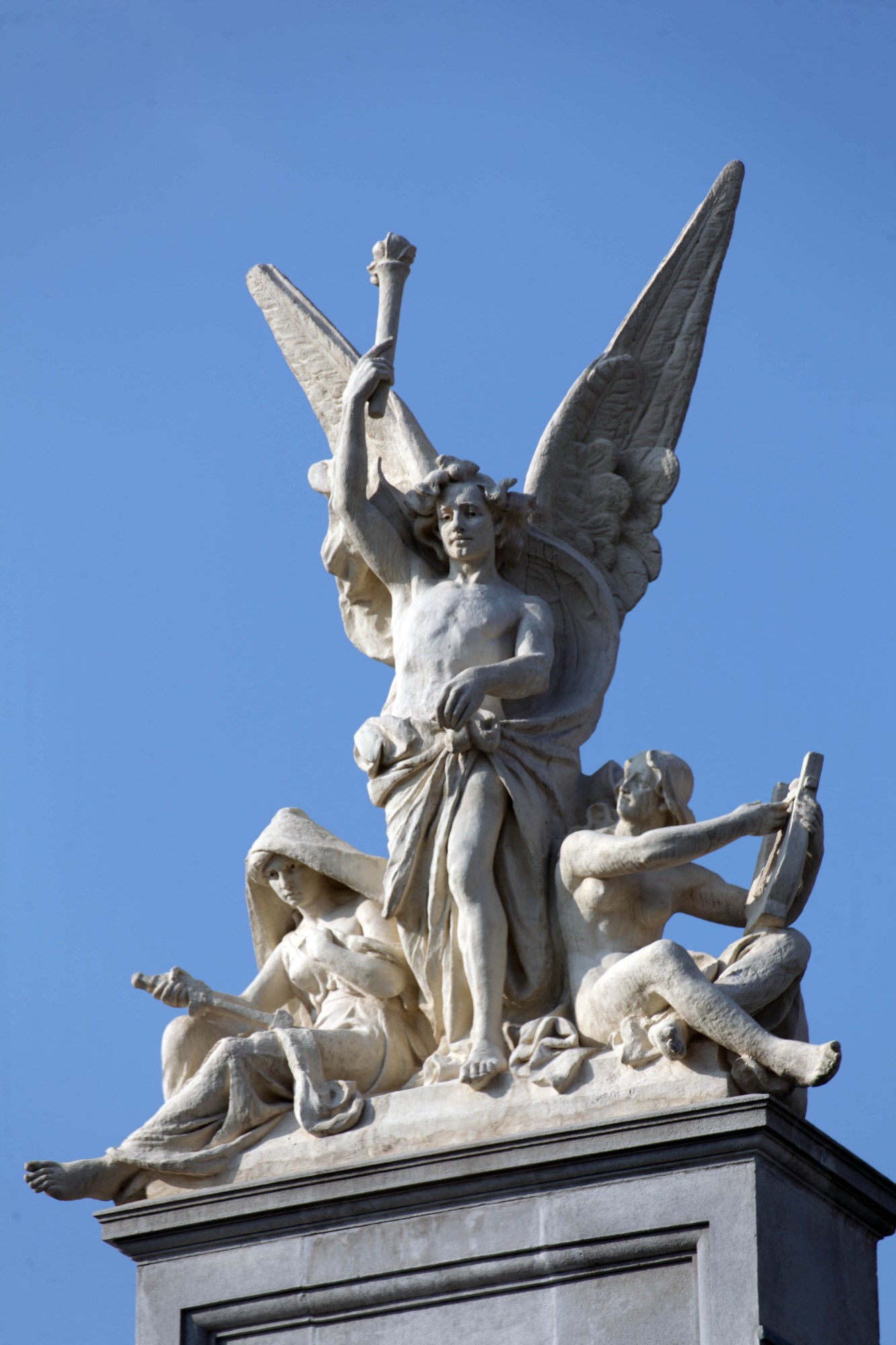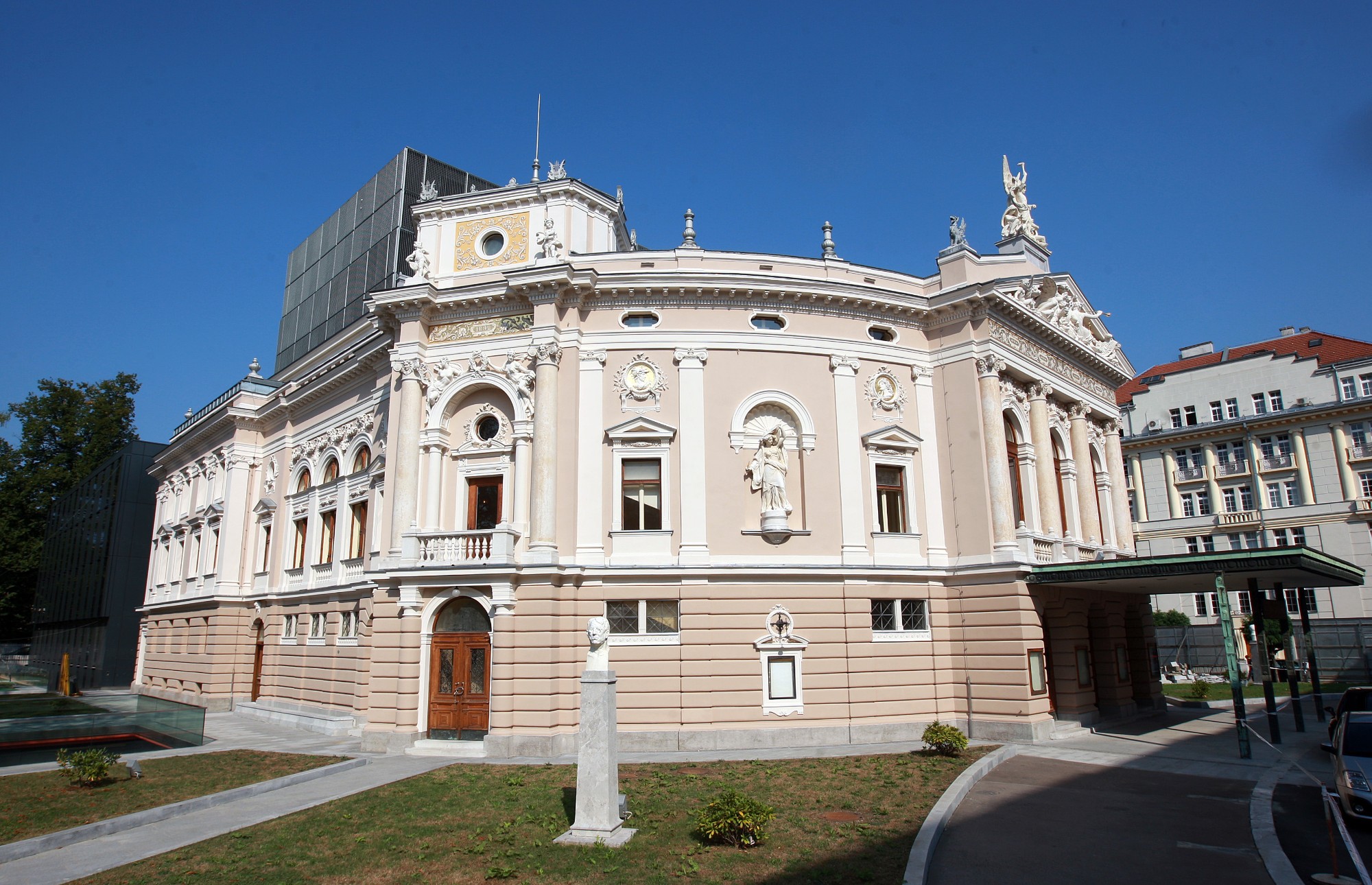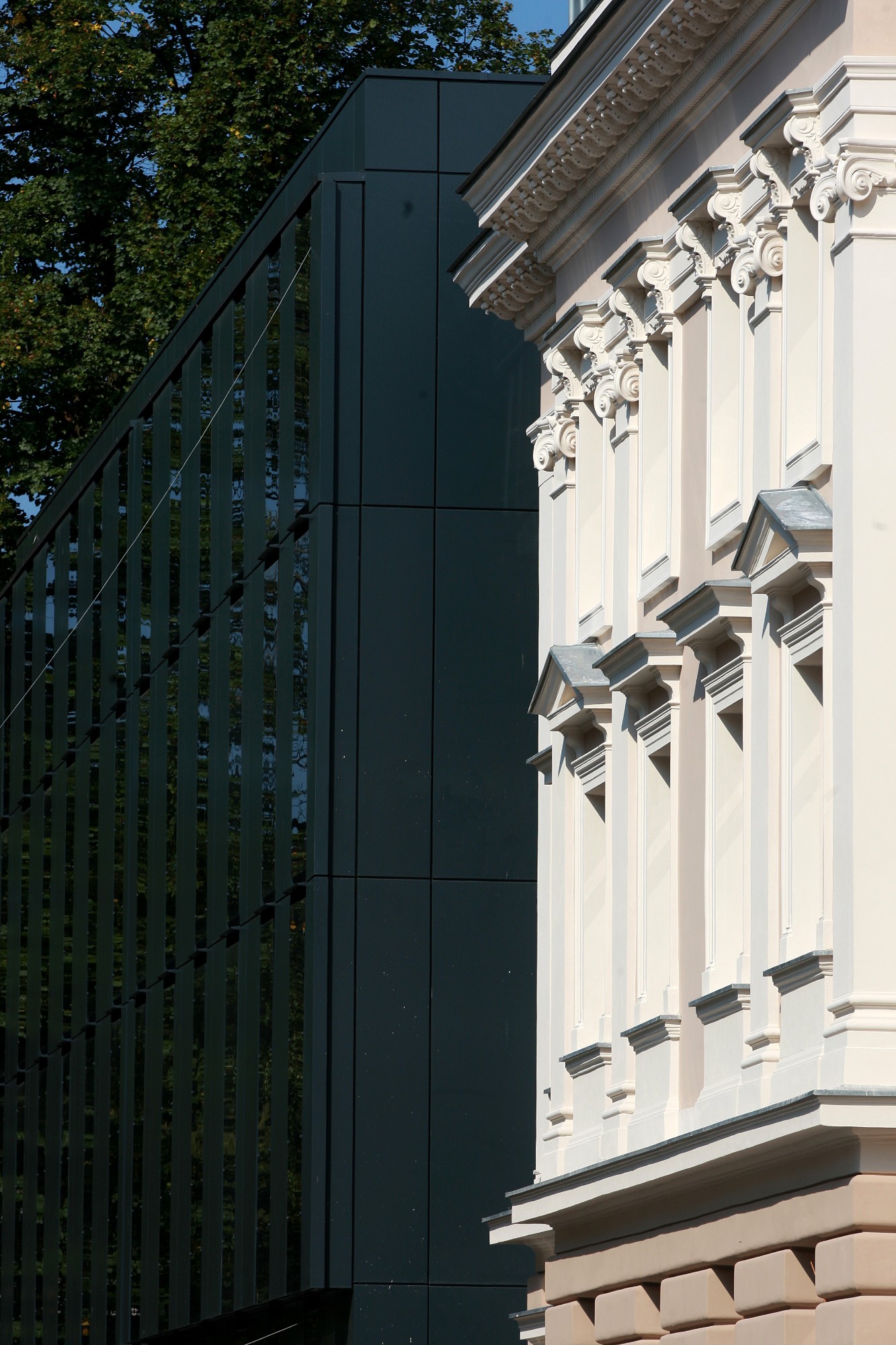Today’s Slovenian National Theatre Opera and Ballet Ljubljana dates from 1892, being built more or less concurrently with the National Museum of Slovenia, Narodni dom and the Slovenian Philharmonic which are located in the general vicinity. The new Opera and Ballet Theatre was constructed to fill the gap created in 1887 when the Slovenian Estate Theatre was destroyed in a fire, and on the initiative of Ljubljana residents, who sought to turn their town into the political and cultural heart of Slovenian nation. The opera theatre is now listed as a cultural heritage monument. The old building, combining neo-renaissance and neo-classical architectural elements, has undergone renovations with the addition of a new annex – a black cube, containing a fly tower – whose muted form blends in with the darkness of the night.
In 1889, a regional committee entrusted the design of the new theatre to Czech architect Jan Vladimir Hraský, who worked in association with a colleague, architect Anton J. Hrubý. Hrubý came to Ljubljana as an employee of Fellner & Helmer, a Vienna company at the time enjoying the status of the most renowned architectural studio specialising in planning theatre buildings in the Habsburg Empire and Central Europe. Due to financial constraints, Hraský and Hrubý were forced to pare down and adapt the size of the planned opera house: the auditorium was lowered by one tier of seats, the number of boxes was decreased, and the idea of a monumental staircase abandoned.
The building initially housed two theatres: the German State Theatre, whose guest conductors included Gustav Mahler and Fritz Reiner, and the Carniolan Provincial Theatre, which lacked a permanent orchestra and performed operas, operettas and singspiels to the accompaniment of a military orchestra (military band). The rivalry between the two theatres was one of positive creative competition.
Slovenian operatic performances began in the 1860s, the period before the Ljubljana opera house was built. Established in 1867, the Dramatic Society opened possibilities, albeit with limited production resources, for staging singspiels, operettas and theatre music performances. Composer and tenor Fran Gerbič played an important role in raising the Society’s professional standards and improving the artistic skills of performers.
It was more than two decades after the opening of the new theatre house, in 1918, that the Slovenian Music Theatre, or the Carniolan Provincial Theatre, acquired a professional orchestra and a ballet ensemble. Composer and conductor Mirko Polič, who was appointed the Opera’s first artistic director in 1925, went down in Slovenian operatic history as a highly influential figure. Over the fourteen years of his tenure, Polič significantly improved the quality of Slovenian operatic life and extended the orchestra’s membership. Apart from classical works, the repertoire included modern works by contemporary composers such as Igor Stravinsky, Richard Strauss, Sergei Prokofiev and Dmitry Shostakovich, and primarily Slavic operas: e.g. Smetana’s The Bartered Bride and Janaček’s Jenůfa. Polič staged Wagner’s works to considerable success (Tannhäuser, 1926; The Valkyrie, 1929; Lohengrin, 1930 and Parsifal, 1933) and fostered, with special dedication, contemporary Slovenian operatic creativity. The Ljubljana theatre produced operas by Risto Savin, Marij Kogoj, Matija Bravničar and Slavko Osterc. Eliciting the help of Niko Štritof, Polič furthermore addressed the vital issue of librettos and, between 1926 and 1936, took the Ljubljana ensemble on tours around venues in Yugoslavia, to Trieste and Rijeka.
After World War II, the Ljubljana Opera staged several important productions and went on notable international tours. With a production of Prokofiev’s The Love for Three Oranges the Slovenian opera ensemble appeared at a festival in the Netherlands and in Paris. A recording of this opera under the baton of Bogo Leskovic was released on the Philips label and received the 1957 Grand Prix du Disque, the premier French award for musical recordings.
During and after World War II, the opera house underwent further changes. The building was extensively renovated in 1940, when a long narrow annex containing a ballet hall was added to the rear facade to augment the spatial volume whilst restoring the stage. After World War II, a group of Alojzij Gangl’s statues, including a winged genius that supposedly reminded some of an angel figure, was removed from the building for political reasons. Several proposals for augmenting the auditorium have been considered since the 1970s. This was prompted by a pressing need to accommodate the rising population – the opera being built for a town with circa 30,000 inhabitants – and address the critical shortage of space, which is a prerequisite to opera and ballet productions.
The last renovation took place between 2008 and 2009. The architects commissioned to plan the restoration, Jurij Kobe and Marjan Zupanc extended the building westwards by building an annex at the site of the demolished Piccoli Villa. The reconstruction was intended to enlarge and modernise the stage complex, and provide for more appropriate rehearsal rooms, dressing rooms, depositories, management offices, box office and newly added premises in which patrons could gather and socialise. Adopting the symmetric design of the opera house, the large new annex provided space for the backstage area, delivery access, rehearsal rooms and appertaining premises. The height, width and depth of the stage were increased by removing dressing rooms, ground embedment and an upward extension of the existing external walls. A new embedded foyer with appertaining areas, accessible from the lateral sides of the building via two new shallow atriums, was built beneath the auditorium. The building thus acquired a new underground lateral axis. The design of the side and main facades and the auditorium was left intact during the refurbishment. Financed by the Ministry of Culture of the Republic of Slovenia, the renovation came under some criticism for failing to produce sufficiently effective spatial solutions.
The SNG Opera and Ballet Ljubljana today programmes the core operatic repertoire, from verismo operas to modernist works, annually staging between three and five new productions. The opera theatre also engages in international co-productions. An event garnering considerable international attention was the 2005 world premiere of Die Rheinnixen, a rediscovered opera by Jacques Offenbach that had been considered lost.
The ballet ensemble annually stages three new productions and regularly programmes works from the standard ballet repertoire (Tchaikovsky, Prokofiev). The Ljubljana corps de ballet made international ballet history with the world premiere of Doctor Zhivago, a dramatic ballet choreographed by the brothers Jiří and Otto Bubeníček. With this production, the Ljubljana Ballet toured St Petersburg and Brno, and Trieste and Klagenfurt with a staging of Swan Lake. In 2017, Orphic Hymn, a ballet by celebrated Belgian choreographer Jeroen Verbruggen, received its world premiere at the SNG Opera and Ballet Ljubljana.
Maia Juvanc

